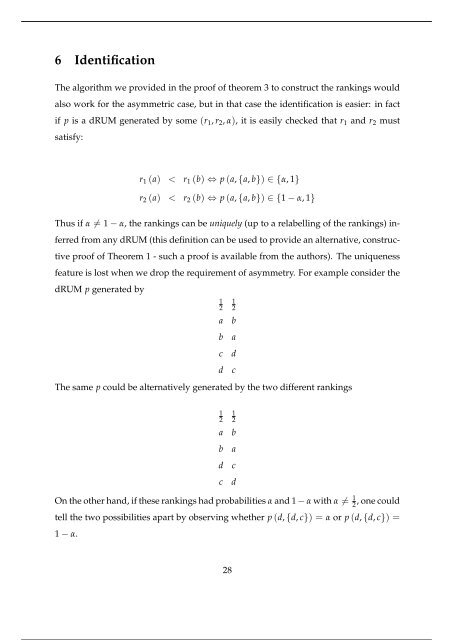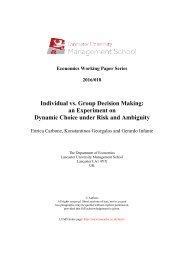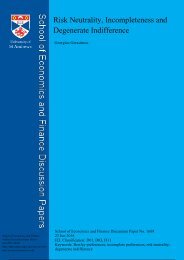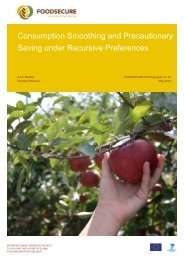Dual Random Utility Maximisation
n?u=RePEc:san:wpecon:1605&r=upt
n?u=RePEc:san:wpecon:1605&r=upt
You also want an ePaper? Increase the reach of your titles
YUMPU automatically turns print PDFs into web optimized ePapers that Google loves.
6 Identification<br />
The algorithm we provided in the proof of theorem 3 to construct the rankings would<br />
also work for the asymmetric case, but in that case the identification is easier: in fact<br />
if p is a dRUM generated by some (r 1 , r 2 , α), it is easily checked that r 1 and r 2 must<br />
satisfy:<br />
r 1 (a) < r 1 (b) ⇔ p (a, {a, b}) ∈ {α, 1}<br />
r 2 (a) < r 2 (b) ⇔ p (a, {a, b}) ∈ {1 − α, 1}<br />
Thus if α ̸= 1 − α, the rankings can be uniquely (up to a relabelling of the rankings) inferred<br />
from any dRUM (this definition can be used to provide an alternative, constructive<br />
proof of Theorem 1 - such a proof is available from the authors). The uniqueness<br />
feature is lost when we drop the requirement of asymmetry. For example consider the<br />
dRUM p generated by<br />
1<br />
2<br />
a<br />
b<br />
c<br />
d<br />
1<br />
2<br />
b<br />
a<br />
d<br />
c<br />
The same p could be alternatively generated by the two different rankings<br />
1<br />
2<br />
a<br />
b<br />
d<br />
c<br />
1<br />
2<br />
b<br />
a<br />
c<br />
d<br />
On the other hand, if these rankings had probabilities α and 1 − α with α ̸= 1 2<br />
, one could<br />
tell the two possibilities apart by observing whether p (d, {d, c}) = α or p (d, {d, c}) =<br />
1 − α.<br />
28






